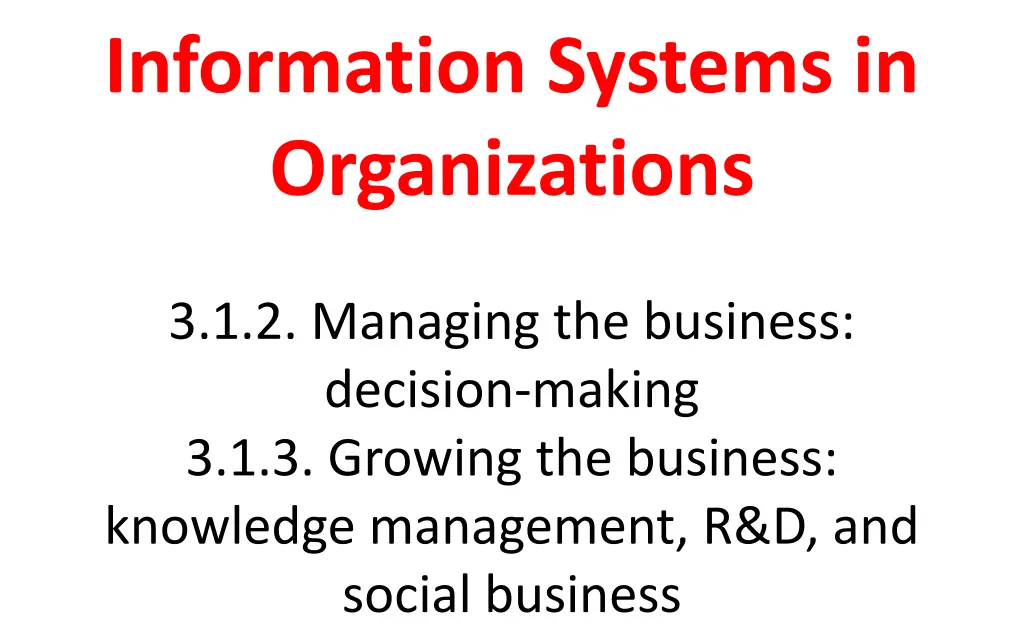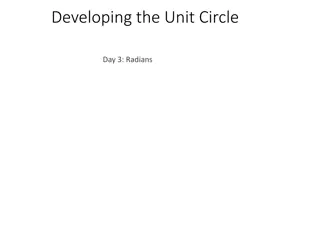
Organizational Systems & Data Analytics Insights
Discover the intricacies of organizational systems, decision-making, knowledge management, and data analytics in businesses. Learn about types of systems, digital business innovation, and the competitive advantage of data analytics. Explore the impact of data-driven decision-making and how it can transform businesses for the better.
Download Presentation

Please find below an Image/Link to download the presentation.
The content on the website is provided AS IS for your information and personal use only. It may not be sold, licensed, or shared on other websites without obtaining consent from the author. If you encounter any issues during the download, it is possible that the publisher has removed the file from their server.
You are allowed to download the files provided on this website for personal or commercial use, subject to the condition that they are used lawfully. All files are the property of their respective owners.
The content on the website is provided AS IS for your information and personal use only. It may not be sold, licensed, or shared on other websites without obtaining consent from the author.
E N D
Presentation Transcript
Information Systems in Organizations 3.1.2. Managing the business: decision-making 3.1.3. Growing the business: knowledge management, R&D, and social business
Course Topics Overview Unit 1: Introduction Unit 2: Systems Analysis Unit 3: Organizational Systems Unit 4: Consumer Systems 2
Unit 3: Organizational Systems How do large firms function today? 3.1. Types of systems in organizations 3.1.1. Running the business: enterprise systems (ERP) 3.1.2. Managing the business: decision-making (analytics, BI, dashboards) 3.1.3. Growing the business: knowledge management, R&D, and social business 3
Unit 3: Organizational Systems 3.2. Systems management 3.2.1. Business analysis, requirements, and systems acquisition 3.2.2. Developing systems: programming, testing, and deployment 3.2.3. Systems integration: standards, interoperability, and external collaboration 3.2.4. Managing risk: security, hackers, and privacy 4
Unit 3: Organizational Systems 3.3. Digital business innovation 3.3.1. Generating IT value 3.3.2. Competitive advantage of digital business models 5
So what is this data analytics stuff all about? One application of data analytics If a baseball team can do this and dramatically improve their standings, how much easier is it for a business to do these sorts of things and dramatically improve their balance sheet?
Define the problem. Identify limiting factors. Develop potential alternatives Analyze the alternatives Select the best alternative Implement the decision Establish a control and evaluation system
Scenario Warehouse Manager You know you have too much cash tied up in inventory. You want to reduce inventory levels. You get a lot of heat when orders are placed and you can t fill the order from inventory. What information do you need, how would you like to see it and how do you make decisions about adjusting inventory levels? Are these structured or unstructured decisions?
Databases & Data Warehouses Operational Databases
What Is a Hypercube? Create multi-dimensional cubes of information that summarize transactional data across a variety of dimensions. OLAP vs. OLTP Envisioned by smart businesspeople, built by the IT pros
Big Data Opportunities Will you be a player?
Question What is a Baby Boomer and how many of them are in the workforce today? How many will be in the workforce 10 years from now? What is Tacit Knowledge ? Why is this keeping CEOs awake at night? Is there technology that we can use to help with this?
Extra Credit Worth up to 5 points on your midterm exam grade Article related to a class topic infoweek, wsj, business insider, etc Create a 3 minute presentation on the article Present at the beginning of class Articles must be submitted & approved
Domain Community of Practice Community Practice
What are the benefits of Knowledge Management? What are the challenges of Knowledge Management?
Unit 3: Organizational Systems How do large firms function today? 3.1. Types of systems in organizations 3.1.1. Running the business: enterprise systems (ERP) 3.1.2. Managing the business: decision-making (analytics, BI, dashboards) 3.1.3. Growing the business: knowledge management, R&D, and social business 24
Unit 3: Organizational Systems 3.2. Systems management 3.2.1. Business analysis, requirements, and systems acquisition 3.2.2. Developing systems: programming, testing, and deployment 3.2.3. Systems integration: standards, interoperability, and external collaboration 3.2.4. Managing risk: security, hackers, and privacy 25
Unit 3: Organizational Systems 3.3. Digital business innovation 3.3.1. Generating IT value 3.3.2. Competitive advantage of digital business models 26






















